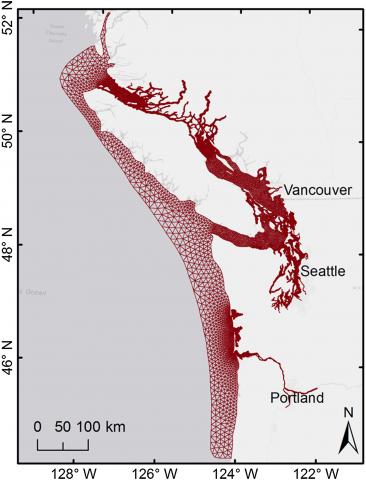Increasing levels of nutrients, persistent hypoxia, harmful algal blooms, and increased frequency of fish kills are degrading the ecological health of the Salish Sea. An improved version of a diagnostic hydrodynamic and biogeochemical model (nutrients, phytoplankton, carbon, dissolved oxygen, and pH) of the Salish Sea has been developed with the ability to simulate characteristic circulation and water quality features. Sensitivity tests were conducted to assess the responsiveness of the system to land‐based (rivers and wastewater sources) nutrient loading. The influence of Fraser River on the magnitude of estuarine exchange with the Pacific Ocean and nearshore habitat was examined given that it contributes nearly half of the total freshwater discharged to the Salish Sea. A large region of hypoxia in Hood Canal that extends over 30–40 km during its peak was reproduced and attributed primarily to the existence of a two‐layer classic fjord‐type circulation and a nearly stagnant deep bottom layer that occupies nearly 60% of the water column. Nitrate mass in the euphotic zone from land‐based and oceanic sources is depleted to near‐zero limiting levels during summer. Under such conditions, the Salish Sea is responsive to changes in nutrient loads entering the euphotic zone directly. A hypothetical scenario involving the elimination of land‐based nutrient sources results in notable water‐quality improvement, featuring a reduction in algal biomass (≈5.4%), reduction in sediment oxygen demand (≈17.1%), and significant reduction in hypoxic area (≈39%) and exposure in area‐days to bottom layer hypoxia (≈62%) within the Salish Sea.
Publication Analysis of Hypoxia and Sensitivity to Nutrient Pollution in Salish Sea
Publication Image

Description
English
